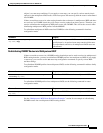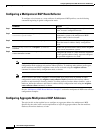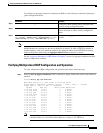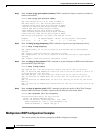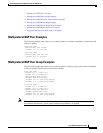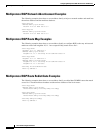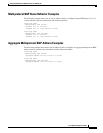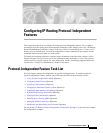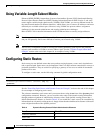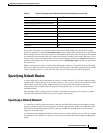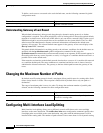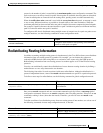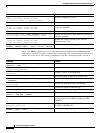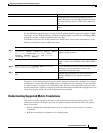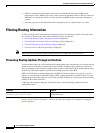
IPC-363
Cisco IOS IP Configuration Guide
Configuring IP Routing Protocol-Independent
Features
This chapter describes how to configure IP routing protocol-independent features. For a complete
description of the IP routing protocol-independent commands in this chapter, refer to the “IP Routing
Protocol-Independent Commands” chapter of the Cisco IOS IP Command Reference, Volume 2 of 3:
Routing Protocols publication. To locate documentation of other commands in this chapter, use the
command reference master index, or search online.
To identify the hardware platform or software image information associated with a feature, use the
Feature Navigator on Cisco.com to search for information about the feature or refer to the software
release notes for a specific release. For more information, see the “Identifying Supported Platforms”
section in the “Using Cisco IOS Software” chapter in this book.
Protocol-Independent Feature Task List
Previous chapters addressed configurations of specific routing protocols. To configure optional
protocol-independent features, perform any of the tasks described in the following sections:
• Using Variable-Length Subnet Masks (Optional)
• Configuring Static Routes (Optional)
• Specifying Default Routes (Optional)
• Changing the Maximum Number of Paths (Optional)
• Configuring Multi-Interface Load Splitting (Optional)
• Redistributing Routing Information (Optional)
• Filtering Routing Information (Optional)
• Enabling Policy Routing (PBR) (Optional)
• Managing Authentication Keys (Optional)
• Monitoring and Maintaining the IP Network (Optional)
See the section “IP Routing Protocol-Independent Configuration Examples” at the end of this chapter
for configuration examples.



